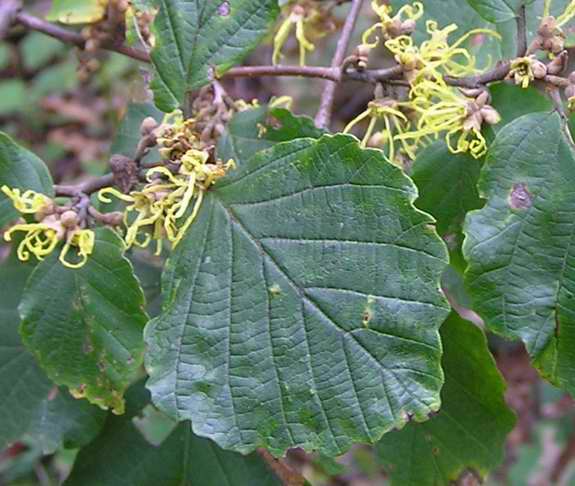|
Common Name: Witch Hazel, Snapping Hazelnut, Water-witch, Winterbloom Scientific Name: Hamamelis virginiana (Genus Hamamelis is from two Greek words meaning "apple," which was a name for any fruit and "at the same time." "Together with fruit" indicates that the previous year's fruit mature just as the flowers emerge in the fall)
Potpourri: The name Witch Hazel is a misnomer, as it has to do with neither witches nor the hazelnut tree. Witch is derived from the Old English word "wych," meaning "to bend." It was applied to pliable branches that were used for dowsing, the practice of looking for water with a forked branch called a divining rod. When early colonists came to North America, they found that the branches of H. virginiana would work for dowsing, and, since the leaves resembled those of the hazelnut tree, it became Witch Hazel.
Native Americans used the Witch Hazel extensively as a medicine. Believing that the Great Spirit had made the plant showy to attract their attention, they experimented, discovering that the leaves and twigs could be used to make an astringent for wounds and sore muscles and a tea to treat various respiratory maladies. Early colonists learned of the native medicine, and used it widely as a topical treatment for cuts, abrasions, and itching.
In the 1840's, Theron Pond of Utica, New York began marketing witch hazel extract as a patent medicine with the trademark "Golden Treasure," which was renamed "Pond's Extract" after his death, forming the basis for the Pond's skin care product line. Hamamelitannins and proanthocyanidins from Witch Hazel have been confirmed experimentally to have anti inflammatory properties and to have a strong reaction to reactive oxygen in skin tissues. It is one of the few native medicinal plants approved by the Food and Drug Administration as a non-prescription drug ingredient. |
